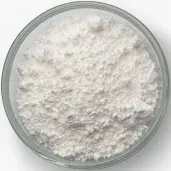
Optimizing Starch-Based Emulsifiers for Enhanced Food Texture and Stability
The Role of Starch Emulsifiers in Food Technology
In the food industry, the quest for improved texture, stability, and overall product quality has led to the increasing incorporation of emulsifiers. Among the various types of emulsifiers employed, starch-based emulsifiers have garnered significant attention due to their multifunctional properties, versatile applications, and natural origins. This article explores the role of starch emulsifiers in food technology, their mechanisms of action, and the benefits they offer to food products.
Understanding Emulsification
Emulsification is a critical process in food production, wherein two immiscible liquids, usually oil and water, are combined to form a stable mixture known as an emulsion. Without emulsifiers, these liquids would separate, leading to an undesirable product. Emulsifiers are surfactants that reduce the surface tension between the oil and water, allowing for a more uniform distribution and increased stability.
What are Starch Emulsifiers?
Starch emulsifiers are derived from starches, which are polysaccharides comprised of glucose units. When modified, starch can exhibit emulsifying properties, making it a valuable ingredient in the formulation of various food products. Common sources of starch include corn, potato, tapioca, and wheat. These starches can be chemically, physically, or enzymatically modified to enhance their emulsifying capabilities.
Mechanisms of Action
The emulsifying action of starch occurs through several mechanisms. Firstly, starch molecules can interact with both the aqueous and oil phases due to their amphiphilic nature. This property allows starch to form a protective layer around oil droplets, preventing them from coalescing and separating from the aqueous phase. Additionally, when heated, starch granules swell and release gel-like structures that further stabilize emulsions by creating a thickened matrix.
Furthermore, the viability of starch emulsifiers is influenced by their degree of gelatinization and retrogradation. Gelatinization occurs when starch granules absorb water and swell upon heating, yielding a viscous gel. Retrogradation is the process by which gelatinized starch reassembles into a more crystalline structure upon cooling. Properly managing these processes can enhance the stability of emulsions, ensuring that food products maintain their desired texture and mouthfeel.
starch emulsifier

Applications in the Food Industry
Starch emulsifiers find application in a wide range of food products
. They are commonly used in dressings, sauces, dairy products, bakery items, and even in meat products, enhancing texture and stability. In salad dressings, for example, starch emulsifiers help to maintain a consistent viscosity and prevent separation, ensuring a homogenous product that appeals to consumers.In ice creams and frozen desserts, starch emulsifiers contribute to a smoother texture by preventing the formation of large ice crystals. This results in a creamier mouthfeel and improved overall quality. Moreover, starch emulsifiers can replace synthetic emulsifiers, catering to the growing demand for clean-label products and natural ingredients.
Benefits of Starch Emulsifiers
The advantages of using starch emulsifiers in food manufacturing are manifold. Firstly, they are generally recognized as safe (GRAS) by food regulatory authorities, making them a reliable choice for food formulators. Secondly, starch emulsifiers often provide cost-effective solutions, as they can be derived from abundant and low-cost raw materials.
Additionally, the natural origin of starch emulsifiers appeals to health-conscious consumers seeking to avoid artificial additives. This trend aligns with the growing emphasis on transparency and sustainability in food production. Starch emulsifiers also contribute to improved shelf life by enhancing product stability, which reduces waste and increases consumer satisfaction.
Conclusion
In conclusion, starch emulsifiers play a vital role in the food industry, significantly enhancing the quality and stability of various products. With their natural origin and versatile applications, they serve as an integral component in creating emulsions that are both appealing and stable. As consumer preferences shift towards healthier and more natural options, the demand for starch emulsifiers is likely to grow, paving the way for further innovation in food technology. The ongoing research and development in this area promise exciting advancements, ensuring that starch emulsifiers remain at the forefront of food formulation strategies.
-
Understanding Synthetic Rubber OptionsNewsApr.27,2025
-
Trichloroisocyanuric Acid: Essential for Clean and Safe WaterNewsApr.27,2025
-
Sodium Dichloroisocyanurate: Key to Safe Water TreatmentNewsApr.27,2025
-
Sodium Acid Pyrophosphate: Essential in Modern Food ProcessingNewsApr.27,2025
-
Essential Water Treatment ChemicalsNewsApr.27,2025
-
Denatured Alcohol and Its Industrial UsesNewsApr.27,2025
-
The Versatile Uses of Sodium BicarbonateNewsApr.24,2025
Hebei Tenger Chemical Technology Co., Ltd. focuses on the chemical industry and is committed to the export service of chemical raw materials.
-

view more DiethanolisopropanolamineIn the ever-growing field of chemical solutions, diethanolisopropanolamine (DEIPA) stands out as a versatile and important compound. Due to its unique chemical structure and properties, DEIPA is of interest to various industries including construction, personal care, and agriculture. -

view more TriisopropanolamineTriisopropanolamine (TIPA) alkanol amine substance, is a kind of alcohol amine compound with amino and alcohol hydroxyl, and because of its molecules contains both amino and hydroxyl. -

view more Tetramethyl Thiuram DisulfideTetramethyl thiuram disulfide, also known as TMTD, is a white to light-yellow powder with a distinct sulfur-like odor. It is soluble in organic solvents such as benzene, acetone, and ethyl acetate, making it highly versatile for use in different formulations. TMTD is known for its excellent vulcanization acceleration properties, which makes it a key ingredient in the production of rubber products. Additionally, it acts as an effective fungicide and bactericide, making it valuable in agricultural applications. Its high purity and stability ensure consistent performance, making it a preferred choice for manufacturers across various industries.











